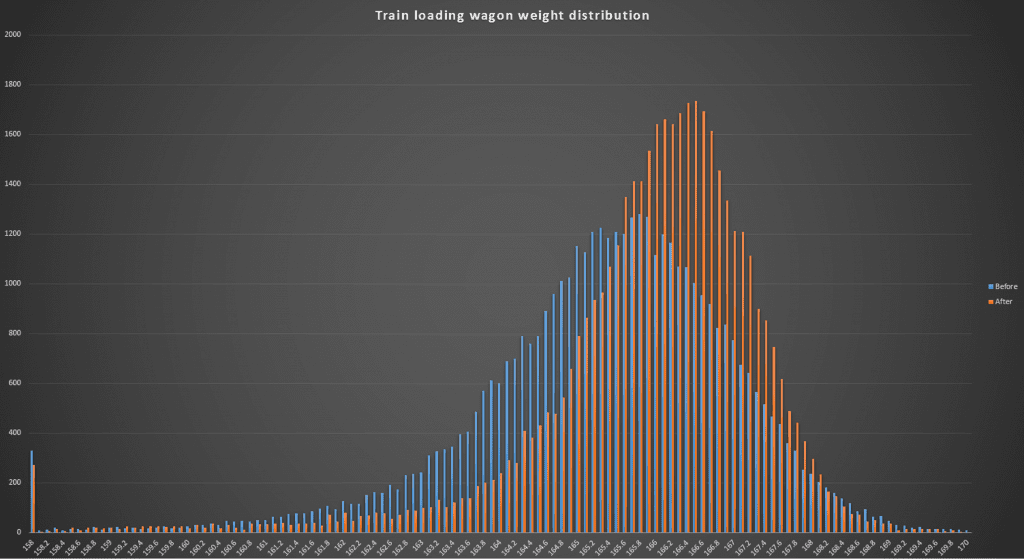The rail network that connects various mines to a port facility is critical to the iron ore mining supply chain of large companies. Ore throughput on a rail network is very difficult to scale once the rail network has reached saturation. This is because most of the rail network is based on single track with no redundancy and adding track over the whole network to increase capacity is very expensive.
Therefore, if ore throughput increases are required over the network, it is critical to optimise the train loading process. This optimisation has to focus on two factors:
- To load the wagons as heavy as possible while being compliant to load restrictions
- To not overload wagons and delay trains by requiring dig-offs on overloaded wagons
The train loading process, control system, and instrumentation were all analysed to understand wagon weight variation and opportunities for control improvement.
The results of all the analysis led to the development of new control algorithms which were successful in reducing loading variation and allowed an increase in wagon weights while also decreasing the frequency of overloaded wagons. Distribution of this optimisation is shown below:

As part of this optimisation project, the Indurad radar wagon positioning system was upgraded alongside an improved Indurad volumetric loading system that also allows earlier corrections to wagon weight deviations.
Through the analytics process, there were additional improvement opportunities identified to the client for further optimisation.
